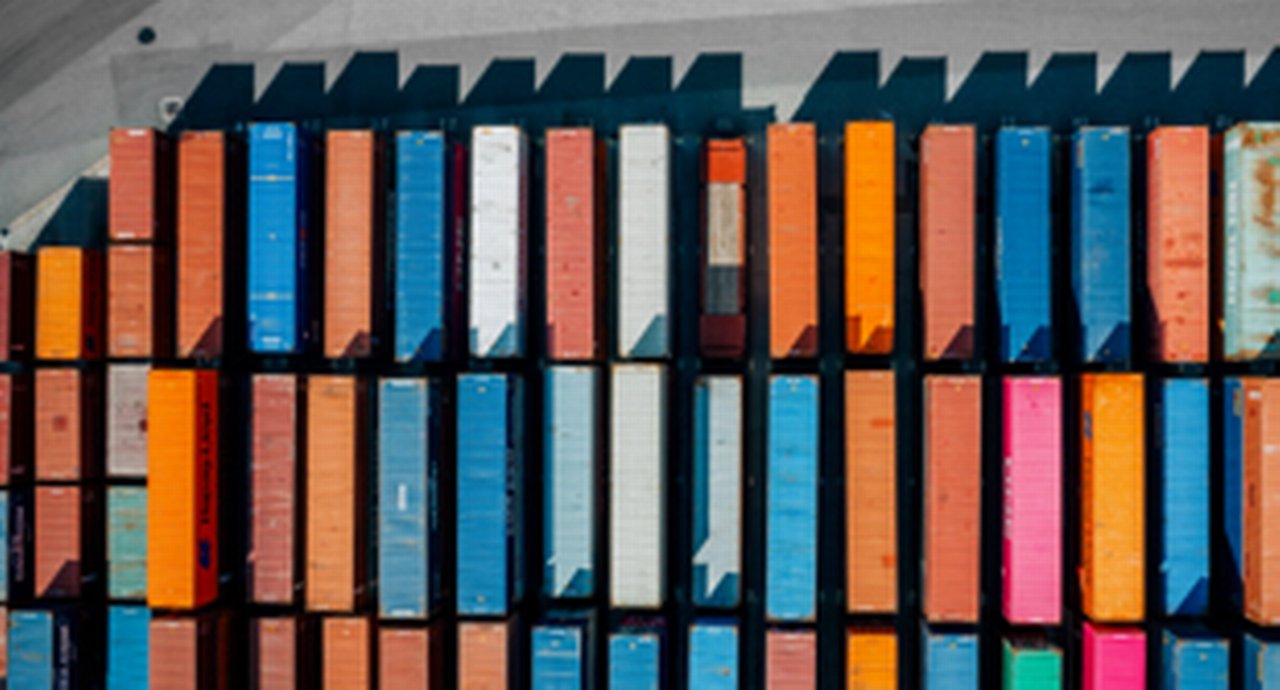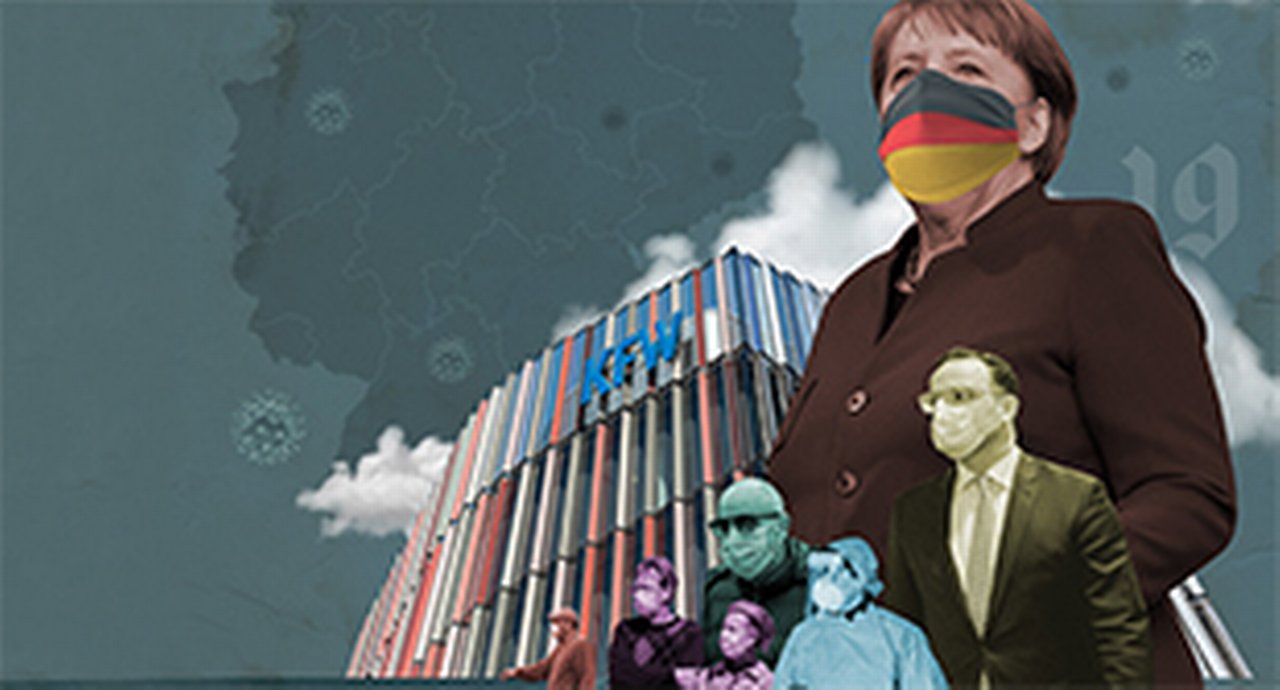30 June 2021
As the world grapples with the impact of its second year of Covid-19 resilience in global value chains can make or break a business and an entire industry. flow reports on discussion points at BCR’s 21st Annual Receivables Finance International Convention (RFiX21)
MINUTES min read
“In years gone by, we used to complain about business struggles – I bet many of you miss those days” began Bertrand de Comminges, Managing Director, Global Head Trade Finance Investments, Santander Asset Management, and Chairperson on 18 May – Day One of publisher BCR’s 21st Annual Receivables Finance International Convention, titled “Emerging into a new world”.
The title was apt – much has happened since early 2020, Covid-19; a radical change of policy in the US; Brexit; continuing US tensions with China and more. Amid this rocky macroeconomic terrain, what does this mean for trade and receivables finance?
Global outlook brightens
Dr Robert Koopman, Chief Economist and Director of Economic Research and Statistics Division, World Trade Organization (WTO) struck a reassuring tone in his keynote address: “Trade and supply chain finance covers about 80% of global trade – and it's going to be critical for the global recovery”. Since Covid-19 became a global pandemic, trade finance has provided an essential source of cash and liquidity to suppliers across multiple stages of large and complex global value chains. This support helped trade recover strongly in Q3 and Q4 of 2020, and while there was a 5.3% decline in merchandise trade volume overall, it was less steep than many predicted. The WTO was initially forecasting a drop of between 13% and 32%.1
Against this backdrop, said Koopman “a number of dimensions, relevant to both emerging and developing markets, must now be considered when exploring investment in trade finance, including: the uncertain global economic outlook, recovery of merchandise trading volumes, supply chain finance growth, resiliency in global value chains, risk versus efficiency trade-offs across firms, households and governments and, of course, the lasting implications of the pandemic on global trade.”
The outlook for trade, and the wider economy, remains uncertain. Global economic growth for 2021 is now expected to be 5.8%, a sharp upward revision from the December 2020 Economic Outlook projection of 4.2%.2 In part, this forecast from the OECD is being driven by a recovery in merchandise trade, which has benefitted countries that are heavily involved in supply chains, particularly those with a focus on pharmaceuticals, medical supplies and IT material.
“Trade and Supply Chain Finance covers about 80% of global trade – and it's going to be critical for the global recovery”
In part, as Koopman explained at BCR’s 6th Annual Supply Chain Finance Summit, covered in flow’s Rethinking global supply chains, trade has also been helped by a series of bold fiscal and monetary policies, which have mitigated the supply shock and drop in demand seen at the start of the pandemic.

Figure 1: World merchandise trade volume 2015-2022
Source: WTO Secretariat.
Note: Figures for 2021 and 2022 are projections.
The scale of recovery, however, is dependent on several factors. For trade itself, as well as the wider economy, “there are positive and negative scenarios” concedes Koopman. “The positive outlook relies on the continued roll-out of vaccinations, as well as the success of these vaccinations on the various virus mutations.”
An evolving landscape

Michael Dietz (Deutsche Bank) and event Chair, Bertrand de Comminges (Santander Asset Management)
The pandemic has underlined the need for flexible supply chains – and among the many difficulties of the past year there have been some positives too. “Covid-19 delivered a brutal lesson in the need for a flexible supply chain. I don't remember a time when people talked so much about supply chains. All of a sudden, they have become a common topic,” reflected Michael Dietz, Global Head of Trade Finance Flow, Deutsche Bank in his keynote talk. In fact, corporate discussions of supply chains have steadily increased over the last six years, even before the strong growth of the past 12 months (see below).

Figure 2: Growth in mentions of “supply chain” in global corporate documents
Source: AlphaSense, Deutsche Bank. DB Research report – May 4th, 2021
One perennial issue for the trade finance industry is the importance of digitalisation, put into sharper focus by the pandemic rendering many of the day-to-day manual interactions impossible. “You may be surprised to hear that a quarter of our clients still use faxes to send trade finance documentation” said Dietz. “Digitalisation is generally not driven by client demand; it is driven by banks looking to make their processes leaner, simpler and more efficient to combat the rising costs of maintaining manual processes.”
“Digitalisation is generally not driven by client demand; it is driven by banks looking to make their processes leaner, simpler and more efficient to combat the rising costs of maintaining manual processes”
Though Dietz believes that any digital solution will always come with some degree of manual processes, as supply chains grow larger, digitalising them is becoming an essential. “Going from a cotton ball in rural India to having a T-shirt on the beach in Portugal is a long process – and involves a long chain of financing,” he added. “The question is, how do you make sure that you know the product reached its destination? How do you make sure each stage of the chain is sustainable? How do you ensure quality is maintained? This is where having a digital chain in place is proving its worth.”
Maintaining liquidity also became a major issue early in the pandemic. In the first weeks, hedge funds and capital sources began to pull back their liquidity to safeguard their investments., The ability to secure liquidity was suddenly no longer a given. “Two years ago, if you went to a client, they would tell you that having access to a bank’s balance sheet was low on their list of priorities,” Dietz noted. “This has changed significantly – it is now very important, and banks have a crucial role to play.”
As the crisis escalated Deutsche Bank, in partnership with Germany’s state development bank KfW, stepped up – to ensure lending reached the businesses that desperately needed it. Since its launch in March 2020, the KfW programme has received more than 96,000 loan applications, with Deutsche Bank not only offering lending support to new and smaller businesses, but also leading the way on syndicated loan demand – supporting on more than half the applications received.3
With conditions still uncertain, partnerships and continued investment in new technologies will be an integral part of business going forward. “Banks have to rethink how they look at fintechs,” said Dietz. “They are not the enemy, they are not even a competitor, they are a partner – one that is able to deliver solutions much quicker than a bank could”. Deutsche Bank’s investment in the Frankfurt-based dynamic discounting and reverse factoring fintech Traxpay is just one example of such a partnership.”4
Geopolitical risk
The pandemic – and the temporary trade restrictions and shortages of medical supplies it precipitated – has exposed vulnerabilities in supply chains, leaving global trade in a period of transition.5 These weaknesses have caught the attention of the world’s governments and media alike, by demonstrating just how important supply chains are to the world economy. As a result, governments across the European Union, China and the UK aim to shorten supply chains and focus on strengthening domestic production.
In the US, President Biden recently signed an executive order that mandates federal agencies to conduct reviews of supply chains for semiconductors, pharmaceuticals, electric vehicle batteries and critical minerals used in manufacturing products such as cars and weapons. The executive order stated that the US “needs resilient, diverse, and secure supply chains to ensure our economic prosperity and national security.”6
But as David Henig, Director, UK Trade Policy Project at European Centre for International Political Economy (ECIPE), told RFiX21 delegates, “Trade has responded – and it is not clear that governments have the power to end global supply chains.” While politicians can encourage resilience in certain places they can’t prevent companies from opting for the best combinations of cost and quality in their supply chains.
Koopman agreed, explaining that, despite much noise around the topic of reshoring, there is little evidence of it. “A lot of what we are seeing is what I would describe as the reorganisation of globalisation. Countries are beginning to export particular goods or services that used to be dominated by countries like China – and this comes at a time when firms are increasingly seeking multiple sources of supply internationally.”

Pictured: Bertrand de Comminges, Santander Asset Management, David Henig, ECIPE, Juliette Lascoux, SEB, Peter Mulroy, FCI, Bob Koopman, WTO, Danae Kyriakopoulou, OMFIF
That said, government policy remains important – especially when it comes to investment flows. Danae Kyriakopoulou, Chief Economist and Director of Research at the Official Monetary and Financial Institutions Forum (OMFIF), explains that “the pandemic has affected different regions asymmetrically – and this has accentuated the ‘my country first’ principle”. For example, the EU, the US and China have each made a series of strategic investments during the crisis – and have even begun to block investments by other nations, including the US’s “buying up” of the Covid-19 drug Remdesivir in June 2020.7 This policy, according to Kyriakopoulou, is not something that is going away. “It is not just a pandemic-driven trend, and will be relevant to a host of other investment flows going forward.”
As a result, the changing US position towards China – from constructive engagement to strategic competition – has led many companies to put a greater emphasis on geopolitical risks. “When it comes to tariffs, the impact on the supply chain has been very limited,” said Juliette Lascoux, Head of Bank and Regional Management, Corporate Coverage International, SEB. “It takes a number of years to build up the kind of supply chains that US companies have built with China in the past decade. Change does not happen overnight”. Indeed, trade with China amounted to about 15% of US exports and imports in 2020, a level it has maintained for more than a decade.8
But the impact of the US-China trade war has been much more direct when it comes to technology. “US measures towards the technology sector have been very effective – and have already translated into sanctions and export controls, meaning that technology within certain critical sectors can no longer flow through China,” said Lascoux. This shouldn’t just be seen as a carryover from the previous administration either, with Biden recently expanding a Trump-era ban on US investment in dozens of Chinese technology firms, she added.9
US-China relations remain fraught, noted Peter Mulroy, Secretary General, FCI “especially in the open account space, a strong trend towards regional trade in Asia.” Regional trade has grown significantly over the last decade – a trend that is set to continue, with projected annualised growth for intra-regional trade between 2019 and 2023 standing at 4.3%, compared to 3.1% for extra-regional trade.10 But, he added, this is not the only trend to keep an eye on. “Whether the significant rise in transportation costs, the effect of inflation on commodity prices or the growing importance of ESG, there are a number of factors at play.” Each of these are playing a significant role in supply chain decision making – and will continue to drive the trade transition for years to come.
BCR’s 21st Receivables Finance Convention was held virtually on 18 to 20 May 2021
Sources
1 See https://bit.ly/3h2mOOo at gtreview.com
2 See https://bit.ly/36390wG at oecd.org
3 See Germany’s lockdown lending at flow.db.com
4 See https://bit.ly/3hh1mnH at db.com
5 See https://bit.ly/2SyVwWq at hrb.org
6 See https://bit.ly/3jmFvOo at whitehouse.gov
7 See https://bit.ly/3w6iD8m at theguardian.com
8 See https://bit.ly/2Uft10E at scmp.com
9 See https://cnn.it/3jl3Wf8 at cnn.com
10 See https://bit.ly/2Uf2akY at gtreview.com
Go to Corporate Bank EXPLORE MORE
Find out more about products and services
Go to Corporate Bank Go to Corporate BankStay up-to-date with
Sign-up flow newsbites
Choose your preferred banking topics and we will send you updated emails based on your selection
Sign-up Sign-upSubscribe Subscribe to our magazine
flow magazine is published annually and can be read online and delivered to your door in print
You might be interested in
TRADE FINANCE, SUSTAINABLE FINANCE
Sustainability and supply chains Sustainability and supply chains
While ESG principles and alignment start at home, they must carry through to supply chains, explain Deutsche Bank’s Anil Walia and Bjoern Goedecke in BCR’s World Supply Chain Finance Report 2021
Trade finance and lending
More Rethinking global supply chains
Supply chain finance (SCF) industry experts gathered virtually for BCR’s 6th Annual Supply Chain Finance Summit to discuss how the industry is recovering from Covid-19 dislocation, embedding ESG into platforms and schemes, and progress on automation and digitalisation. Clarissa Dann reports
TRADE FINANCE, MACRO AND MARKETS {icon-book}
Germany’s lockdown lending Germany’s lockdown lending
flow talks to KfW’s Ingrid Hengster, who provides insights into the development bank’s partnership with the Germany government and commercial banking sector to support German businesses



